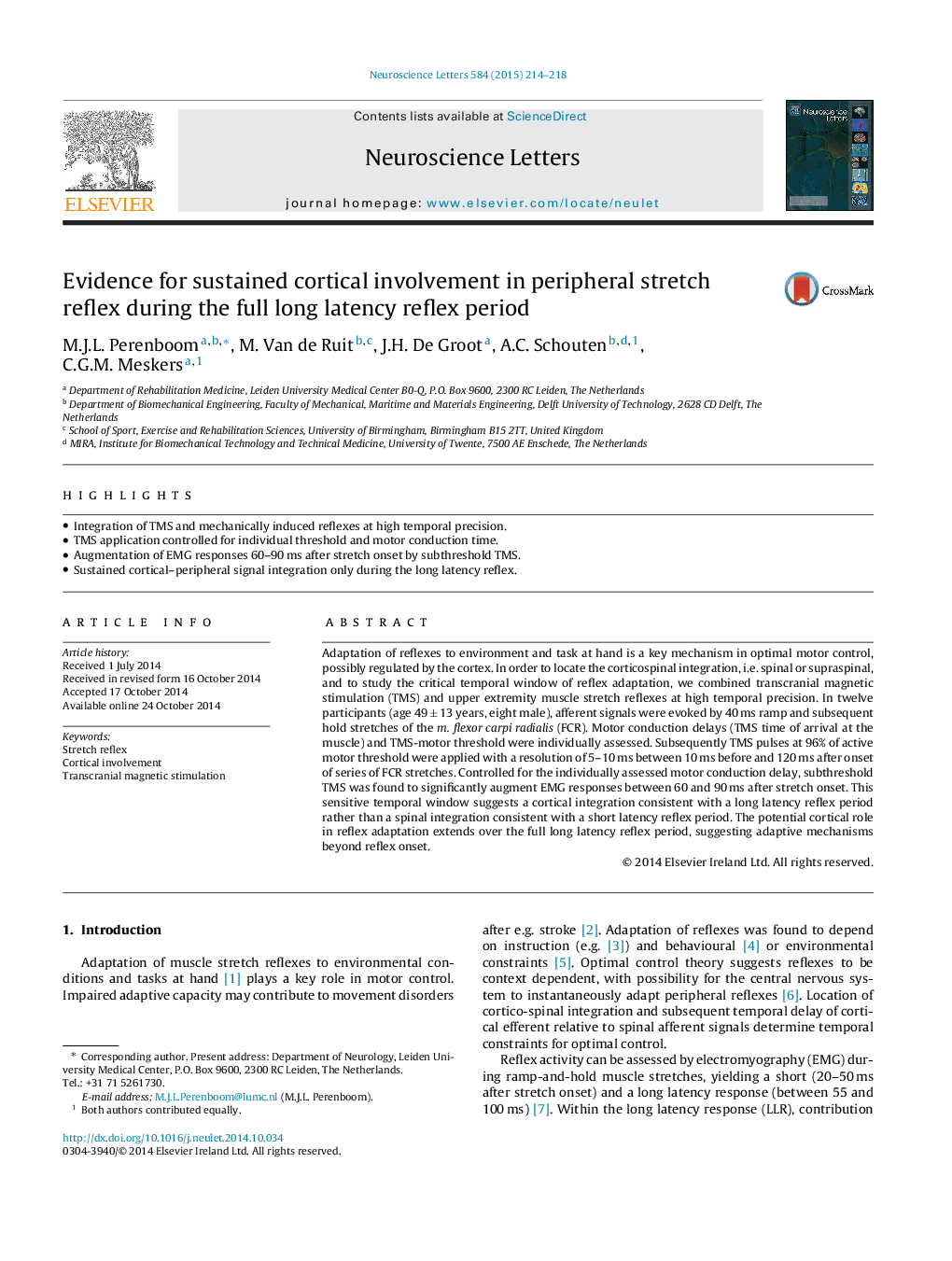| Article ID | Journal | Published Year | Pages | File Type |
|---|---|---|---|---|
| 6281463 | Neuroscience Letters | 2015 | 5 Pages |
Abstract
Adaptation of reflexes to environment and task at hand is a key mechanism in optimal motor control, possibly regulated by the cortex. In order to locate the corticospinal integration, i.e. spinal or supraspinal, and to study the critical temporal window of reflex adaptation, we combined transcranial magnetic stimulation (TMS) and upper extremity muscle stretch reflexes at high temporal precision. In twelve participants (age 49 ± 13 years, eight male), afferent signals were evoked by 40 ms ramp and subsequent hold stretches of the m. flexor carpi radialis (FCR). Motor conduction delays (TMS time of arrival at the muscle) and TMS-motor threshold were individually assessed. Subsequently TMS pulses at 96% of active motor threshold were applied with a resolution of 5-10 ms between 10 ms before and 120 ms after onset of series of FCR stretches. Controlled for the individually assessed motor conduction delay, subthreshold TMS was found to significantly augment EMG responses between 60 and 90 ms after stretch onset. This sensitive temporal window suggests a cortical integration consistent with a long latency reflex period rather than a spinal integration consistent with a short latency reflex period. The potential cortical role in reflex adaptation extends over the full long latency reflex period, suggesting adaptive mechanisms beyond reflex onset.
Related Topics
Life Sciences
Neuroscience
Neuroscience (General)
Authors
M.J.L. Perenboom, M. Van de Ruit, J.H. De Groot, A.C. Schouten, C.G.M. Meskers,
